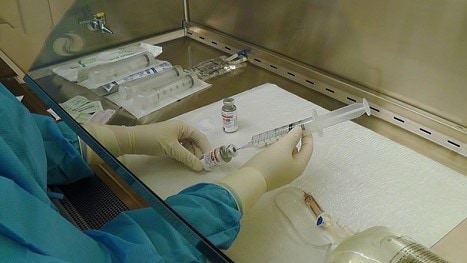Highlights
Up-to-date information and resources on Hazardous Drug Exposures in Healthcare.

Recent hazardous drug publications
Hazardous Drug List
NIOSH List of Antineoplastic and Other Hazardous Drugs in Healthcare Settings, 2016 -
DHHS (NIOSH) Publication Number 2016-161
Information for Healthcare Settings
Who is at risk?
Healthcare workers who prepare or administer hazardous drugs (e.g., some cancer therapy, antiviral, hormone therapy, and bioengineered agents) or who work in areas where these drugs are used may be exposed to these agents in the workplace. About 8 million U.S. healthcare workers are potentially exposed to hazardous drugs, including:
- pharmacy and nursing personnel
- physicians
- operating room personnel
- environmental services workers
- workers in research laboratories
- veterinary care workers
- and shipping and receiving personnel.
Acute and chronic health effects
Published studies have shown that workplace exposures to hazardous drugs can cause both acute and chronic effects such as:
- skin rashes
- adverse reproductive outcomes (infertility, spontaneous abortions, congenital malformations)
- possibly leukemia and other cancers
The health risk to a worker depends on how much exposure the worker has to these drugs and the toxicity of the drugs.
Update on the NIOSH List of Hazardous Drugs in Healthcare Settings 2024
In 2020, NIOSH requested public comments on the:
- updated draft NIOSH List of Hazardous Drugs in Healthcare Settings, 2020,
- draft NIOSH Procedures for Developing the NIOSH List of Hazardous Drugs in Healthcare Settings, and
- draft Managing Hazardous Drugs Exposures: Information for Healthcare Settings.
There was a 60-day public comment period open from May 1st, 2020 to June 30th, 2020.
The NIOSH Procedures for Developing the NIOSH List of Hazardous Drugs in Healthcare Settings and Managing Hazardous Drugs Exposures: Information for Healthcare Settings have been published. When the NIOSH List of Hazardous Drugs in Healthcare Settings, 2023, has been finalized it will be published to the NIOSH website.
